I would like YM students to become more considerate of all the layers of muscles and organs* residing in this area. Use your Yoga to tune into the deeper abdominal muscles to strengthen them because this is important to their function as stabilizers of the limbs but there must be movement here too, not rigidity. (After this post I list the organ and functions if ye want to have a little reminder*).
Abdominal muscles assist breathing, align the pelvis, flex and rotate the trunk, hold in and help protect viscera, keep the torso erect, support the lumbar spine. The ‘core’ is a useful phrase in what we do; the word is a shortcut in an instruction but it can also be both ‘misunderstood’ and sometimes ‘mis-elevated’ in translation of its meaning. Your abdominal muscles are PART of your CORE and strong abdominal muscles support good health. YOUR CORE IS BROADER THAN YOUR ABDOMINAL AREA. You will work ALL your core in Bikram Yoga even when we do not focus on it; you will activate the core muscles, mostly we are not interested when teaching in ‘compartmentalising’ like you might when using different apparatus in a gym; but right now I focus on abdominal core.
Just beneath your skin there is a sturdy wall of muscles stretching over your internal organs:
RECTUS ABDOMINUS: On the surface the ‘straplike’ Rectus Abdominus extends along the front, from pubic bone to sternum.
A well maintained, responsive Rectus Abdominus: can help in forceful exhalation (accessory muscle), keeps the abdominal organs in place, helps you do sit up with ease, helps protect lower back. These are NOT the muscles that helps you pull off the fancy Yoga poses 🙂
Prevailing images of a six pack as representative of strength and health has led to the common misunderstanding about what is the ‘core’ of your body leading many to work these muscles in isolation. The core is much much more than the abdominals and much more than the Rectus Abominus. You can have a strong core without a six pack. Conversely, you can have a six pack ‘without’ core strength!
Overworking these muscles (to achieve six pack) not only compromises your backbends it can actually create a rounding towards front of torso and flatten the natural curve of your lumbar spine.
EXTERNAL & INTERNAL OBLIQUES: Either side, a thin powerful muscle called the External Oblique runs diagonally from the ribs to the rectus, forming a “V” when viewed from the front.
Running perpendicular to the External Obliques, the Internal Obliques lie just below.
These two pairs of muscles work in concert, rotating the trunk and flexing it diagonally.
SUCKING IN YOUR TUMMY: You hear us say this in class (interchangeably with ‘engage your abdominal core’ instruction). In teaching a ‘beginning Yoga‘ class, with a high proportion of new people (first timers) trying this out (in every class), ‘Engage your core’ can mean ‘a b s o l u t e l y n o t h i n g ’ to them. Suck in your tummy is more useful instruction to bring attention to the ‘AREA’ that they are going to be working, just to keep things simple. (Remember a high proportion of people who try this Yoga never keep it up and in order to keep the class on track for regulars it is not Bikram method to pause the class for deep/detailed instruction on anatomy. There is no time (see ‘Method to the Madness’ 🙂 ). (Hopefully the rest of this post will reassure those for whom ‘engage your abdominal core’ means nothing.)
Suck in your tummy is NOT an instruction to hold your breath! To effect it you pull your belly button towards your spine to create a hollowing effect. Effectively you are now recruiting the Transverse Abdominus muscle. REMEMBER! Always start these actions from neutral spine position! Sucking in your tummy is a very good start where one has never activated this area before. Longer term practitioners, as they evolve their practice and educate themselves, want to know more about this instruction and what other actions they can take in this area for longer term progress in some of the postures. Never worry! This can be experimented with, it does not have to be ‘rigid’ly practiced or relied on to effect posture and obtain benefits. People learn in time how to activate core abdominal muscles as necessary.
TRANSVERSUS ABDOMINUS (THE BIG ONE !): The innermost layer of abdominal muscle the Transversus Abdominus (hidden behind the six pack) runs horizontally wrapping the torso like a CORSET. Hidden they may be but most essential to Yogasana they are. Hugely functional, they stabilize the pelvis and lower lumbar spine.
You engage this muscle when coughing, sneezing or exhaling forcibly. See! These muscles know what to do even without your interference! They are protecting you already 🙂 . You activate THIS muscle to pull in your belly. THIS is the muscle that keeps you light.
Unlike the other three groups of abdominal muscles, the Transversus Abdominus doesn’t move your spine, it controls mobility. Perhaps the most effective means of exercising it entails working with the breath. Pranayama practices involving active/vigorous exhalation e.g. Bikram Kapalbhati provides an excellent workout for this deep muscle.
HOW DO YOU KNOW IF YOU’RE ENGAGING CORRECTLY?: Test it in a seated forward fold. If your Transversus Abdominis is engaged correctly you will almost feel your hips moving behind you in the opposite direction of your fold.
The location, deep inside the abdominal cavity, makes it difficult to engage this muscle in isolation for Yoga moves but you don’t really want to isolate it.
Whilst it is nice to know the individual muscles you are working in Yogasana it is important to know that there is more than one muscle involved in creating an action. In class you are effectively teaching the muscles in the body to work together more efficiently. So you work your Transversus Abdominus WITH your Pelvic Floor muscle to maximise stability and ease in the abdominal and lower back area in many postures and posture transitions. (Also they work with Multifidus, but that is topic for another post.)
WHAT is the PELVIC FLOOR?: The Pelvic Floor separates the pelvic cavity (above) from the perineum (below). It is the muscular base of the abdomen attached to the pelvis running from your pubic bone to tail bone Hence ‘Floor’.
When the muscles of your Pelvic Floor activate your Transversus Abdominus can engage (contract) properly.
HOW: Getting your Pelvic Floor to engage properly is a combination of pulling upward and inward action; The most common way to describe how is to ‘try’ and pull back or stop yourself weeing mid flow.
In Yoga this is known as Mula Bandha (See Bellyup Part III). If you are unsure about how to do this; practice it on its own first in a seated meditation position and then incorporate it with asana. Ensure you engage this lock when you are in spine neutral position before you take any other action to effect posture. Endeavouring to use Mula Bandha improves concentration and mental clarity and helps improve energy and vitality (it’s an energy seal).
Using Mula Bandha with asana can increase core stability.
WHERE / WHEN TO ACTIVATE TRANSVERSUS ABDOMINUS & PELVIC FLOOR: No, I don’t walk around all day long with my abdominal core engaged and no I don’t engage it all the way through every class either. Yes, I could/should probably engage it a bit more than I do in my daily activities and in my practice (human person being that I am 🙂 ). No, my world won’t grind to a halt ‘cos I don’t. It does not constitute an emergency; you are not going to Yoga hell if you don’t engage 24/7.
PLEASE STOP WORRYING ABOUT THIS RIGHT NOW! If I instruct you interlock your fingers to and pick up your foot, for the most part, without specific instruction you will engage your core to some degree to effect that action anyway! It is an automatic response for many but this is hard to convey so people sometimes worry if they are/are not doing something they should/should not. PLEASE don’t worry about this stuff; if you do you are introducing stress to your practice. Some may be weak in this area but if you TRUST yourself that in your actions in class you are being mindful, listening to the instructions, following them to the best of your ability, listening to the feedback from your body, stopping actions when you need to! You will be fine!).
IF you know you want/need to engage them more then YOU HAVE TO focus deeply on the feelings as you repeatedly try to activate these muscles. You can practice engaging them in static/neutral positions (standing in the shower, in the queue in the bank 😉 ), moving (walking to work/class). Ultimately, if you want to have lighter postures and you know your core is the answer then you have to activate these muscles in the proper context. In your Yoga class. This took me a long time to get going on myself, there was SOoooo much else to think about in the postures and HEY! I’m still ok. You have to focus EVERY time. I mean EVERY time you practice. START TODAY. Engage these and you can fly in Yoga. Please, LET THEM GO when you are finished with them.
Om Om Om phew! 🙂 BELLY OUT!
~ Trisha
BELLY UP PART I ~ FREE YOUR BELLY ~
BELLY UP PART II ~ SEE YOUR BELLY ~
BELLY UP PART III ~ RESPECT YOUR BELLY ~
*ORGANS OF THE ABDOMEN The space is home to the following crucial organs:
Liver: filter/processing unit for circulating blood removing toxins, poisons, chemicals and drugs from bloodstream and stores them for removal by kidneys. Proteins, fats minerals, amino acids and vitamins processed/stored. Essential blood clotting factors also generated here. Minor role in bile production and fat digestion. Stores one year supply of Vit A and 1-4 months of Vit D.
Spleen: largest node producing lymph (necessary for normal function of immune system). Produces B-cells which are critical in the creation of antibody producing plasma cells. Filters/removes bacteria and old cells from blood. Aids body in blood regeneration (cases of significant blood loss).
Stomach: receives and stores food, begins process of digestion. Excretes enzymes/gastric juices that break down food in prep for the small intestine.
Pancreas: produces alkaline juice needed in small intestine to aid digestion. Critical endocrine functions: Manufactures/releases proper amount insulin (to regulate circulating blood glucose) and glucagon which stimulates liver to release stored glycogen (carbohydrates).
Kidneys/Bladder: receives stored toxins from liver for elimination. Regulate body fluids and electrolyte levels. Filtering fluids the kidneys withdraw waste such as uria and ammonium and pass it out of the body in urine. This filtering and removal also plays role in blood pressure regulation. (The Adrenal glands also sit on the Kidneys).
Small Intestine: digestive organ (hollow) that winds laterally. Most absorption of nutrients from foods takes place here.
Large Intestine (Colon): digestive organ (hollow) primarily withdraws fluid for re-absorption and forms digested food into fecal matter for elimination.
Gallbladder: stores bile for use in stomach and duodenum for digestion. Bile plays essential role in the breakdown of fats in the stomach and small intestine.
Appendix: no known useful function.
Womb/Ovaries: Female organs for reproduction, conception and gestation.
Nov2016

